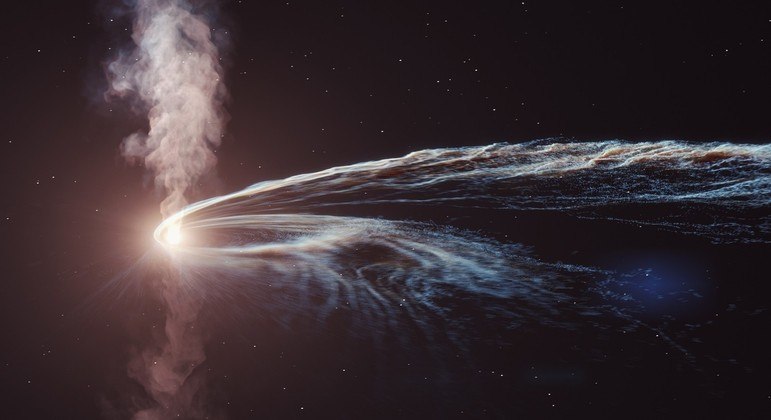Astronomers noticed a giant and interesting phenomenon. A supermassive black hole devoured a star and released it three years later. The event began in October 2018, when a young star was torn to shreds when it passed near the black hole, which is at the center of a galaxy 665 million light-years from Earth.
In 2021, a telescope in New Mexico, USA, caught the same black hole “spewing out” the remnants of the star by emitting a bright flash at half the speed of light.
It was not the star’s violent destruction and the luminous secretions of some of its substances that caused the surprise, but the three-year period.
“It totally surprised us—nobody had seen anything like this before,” said Yvette Sendez, a research assistant at the Harvard and Smithsonian Center for Astrophysics and lead author of the research paper. The study that analyzed the phenomenonnamed “AT2018hyz event”, and published on 11, in the magazine Astrophysical Journal.
According to the careful analysis of the researchers, who used four ground-based and two space-based observatories in the study, the predator did not swallow any other celestial bodies during that period, which may explain the return of the luminous substance.
huge meal
A supermassive black hole is distinguished from a stellar black hole in that it is usually found in the center of galaxies, and consists of groups of millions of stars or huge clouds of gas, which collapse under the influence of their own gravity. They have a mass millions or even billions of times greater than the mass of the Sun.
The destruction of a star by a supermassive black hole is a very special event, called a “tidal perturbation event”. This happens when a star gets too close to such a black hole and is stretched layer by layer by the hole’s gravity.
During this process, the star’s light becomes a kind of thread stretched around the black hole, in a process called “spaghettification,” because it metaphorically resembles a string of pasta wrapped around a fork. This giant strip of light rotates and generates a bright flash that is picked up by telescopes and observatories.
This process occurs approximately at the same time that the black hole “feeds” the star, and not after three years, as it did.
To make it even stranger, this was one of the brightest types of spaghetti ever observed by scientists and traveled at about 50% the speed of light, rather than 10% like the vast majority of such events.
Added Ido Berger, Harvard University professor of astronomy and co-author of the study book. in the current situation.
The main event hypothesis, for now, is: This delay is probably more common than you think. This suspicion will only be resolved by observing more “meals” made by supermassive black holes.
Read below: Discover 10 incredible facts about the historical image of a black hole

“Coffee trailblazer. Social media ninja. Unapologetic web guru. Friendly music fan. Alcohol fanatic.”

